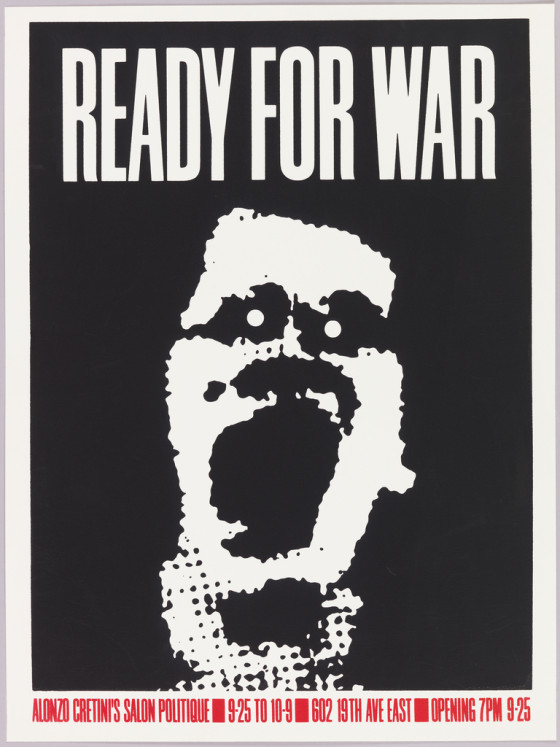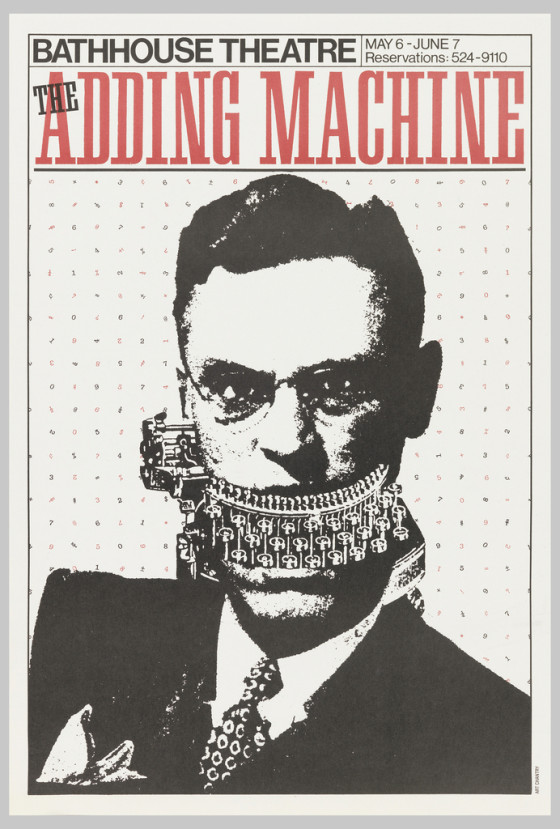Art Chantry’s posters from the 1980s combine simple collage techniques with low-cost printing. Chantry often cut images out of magazines and catalogs, photocopying them to create high-contrast images that he could put together into arresting illustrations. Each poster uses mass media to comment on its own idioms.

Poster, Ready for War, 1982. Designed by Art Chantry (American, b. 1954). Screenprint. 60.9 × 45.5 cm (24 × 17 15/16 in.). Gift of Steven Heller and Karrie Jacobs, 1993-53-27.
According to designer Art Chantry, this poster became a piece of longterm political street art in Seattle. It was reprinted numerous times and wheat-pasted during the “war scare” incidents of the Reagan era.

Poster, The Adding Machine, 1981. Art Chantry (American, b. 1954) for Bathhouse Theatre (Seattle, Washington, USA). Screenprint. 45.1 × 30.5 cm (17 3/4 × 12 in.). Gift of Art Chantry, 1995-69-31.
Art Chantry’s poster The Adding Machine (1981) employs a simple act of cut and paste to transform a keyboard into a row of teeth.
Ellen Lupton is Senior Curator of Contemporary Design at Cooper Hewitt, Smithsonian Design Museum and Director of the Graphic Design MFA program at Maryland Institute College of Art.
The exhibition How Posters Work is currently on view at Cooper Hewitt through November 15, 2015. You can learn more at the exhibition homepage and find the book How Posters Work at SHOP Cooper Hewitt. #HowPostersWork
